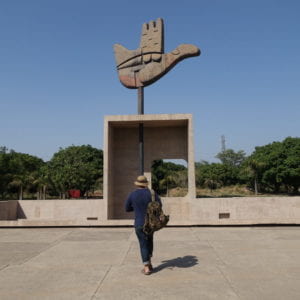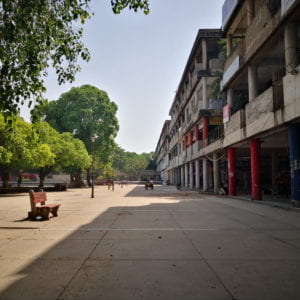We are reaching the end of our travel fellowship, with only a few days left in this golden city called Amritsar. It has been an amazing journey thus far, and this country has offered us experiences and histories far beyond our expectations. Travelling to Chennai, Auroville, Delhi, Chandigarh and now Amritsar, each and every city never failed to amaze us with their people and their city.
Before arriving to this city, I’m glad to say that we have surveyed through almost every corner of Chandigarh with our oogley eyes that feasted on the works by the famous French architect, Le Corbusier. This stop at Chandigarh has been the most awaited part of the trip for me for it is indeed an architecture paradise for a building nerd like me. Imagine a city with every piece of land designed by a single genius mind of an architect, with its roads and landscape specifically laid and chosen in each sector to align to this grand idea of a living utopia. The whole city was designed and built for the people after the partition when violence and unrest were at its peak. And so, Corbusier aligned his urban vision of efficiency and with India’s hope for peace and harmony. The open hand symbol that is observed everywhere in Chandigarh represents just that, conveying a message of peace and reconciliation with the unity of mankind. A similar concept to the utopian vision in Auroville, but obviously constructed and visualized so differently.
With the entire built environment not exceeding three storeys, the concept behind this garden city is conserved and so very much preserved even in these modern times. We had the privilege of speaking with some of the architects working here as well. They shared their insights and spoke about the challenges faced while practicing their profession in this city. It was amazing to hear their stories and imagining their city change and progress as much as it can through their testimonies shared. The greatest story shared was by Mr S.D. Sharma, one of the oldest architect in Chandigarh who has worked with the first teams of planners when Chandigarh was in its works, which meant that he had worked alongside Le Corbusier himself! And also with Pierre Jennenret and even Albert Mayer. Amidst all these foreign names that sound grand and familiar to those reading and studying about architecture and urban planning, what impressed me the most was not his entire resume on the people he has worked with but it was his humble heart and attitude when he talked about these people and his city. He was deeply in love with Chandigarh and worshipped Corbusier for his ideas and concepts that conceived this city to what it is today. Even as this city faces modern urbanisation issues, he remains optimistic and idealistic about Corbusier’s dream about this living utopia. His passion for his profession and city was contagious and soon, all three of us were in awe of his own works and stories told.
Indeed, this city is different from the other cities of India. Some may find it boring and too static, but talking to the locals and residents here might change your perspective. The convenience of every self sustaining sector and the efficiency of roads and traffic here is uncomparable to the liveability of other cities in India. Even after travelling to other parts of their country, they always seem to come back to this small city that they’ll always call home. Utopia might always seem to be an idealistic dream that is unattainable but perhaps Chandigarh has already become the epitome of the perfect city that the people here have always dreamt of.

